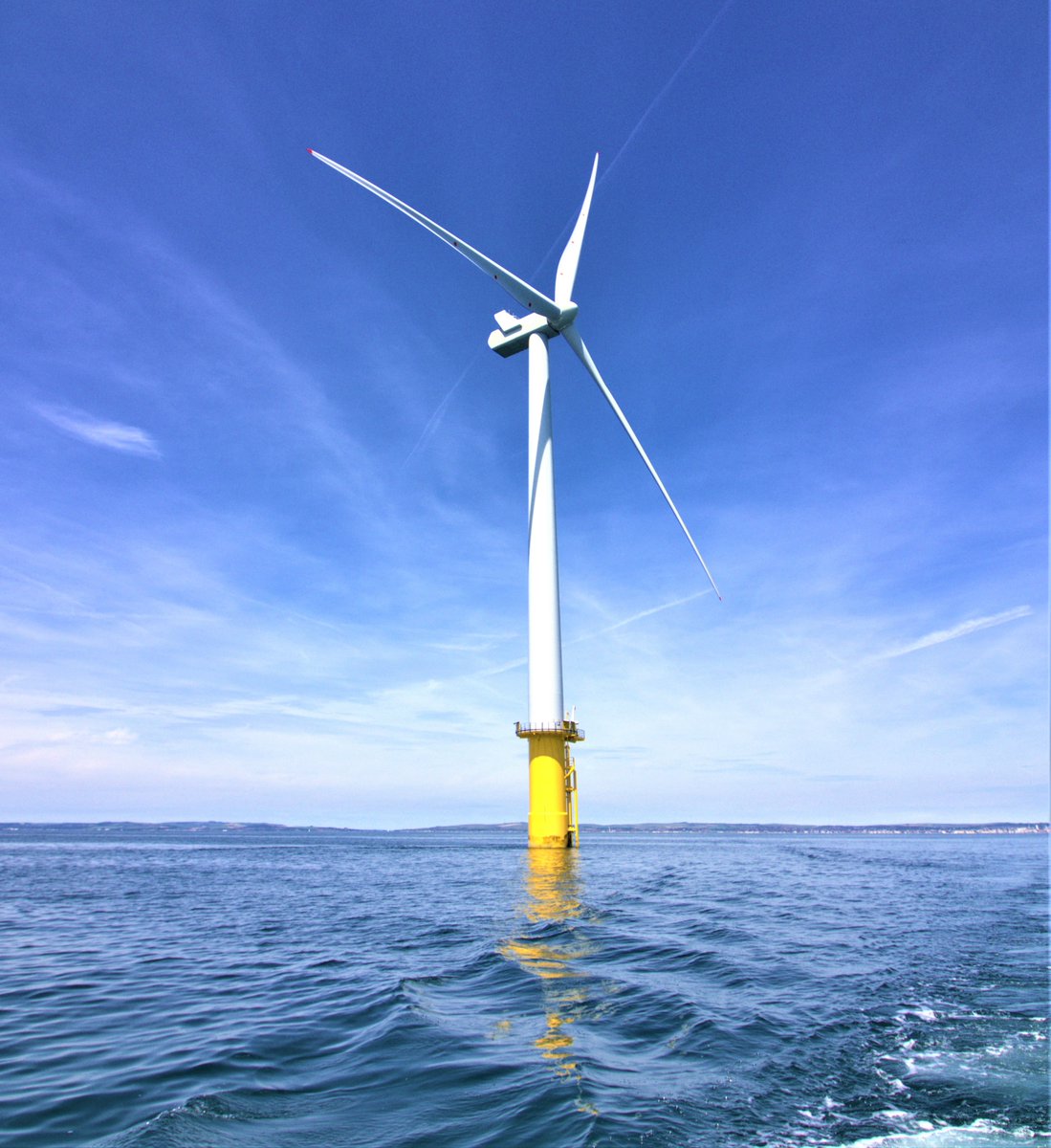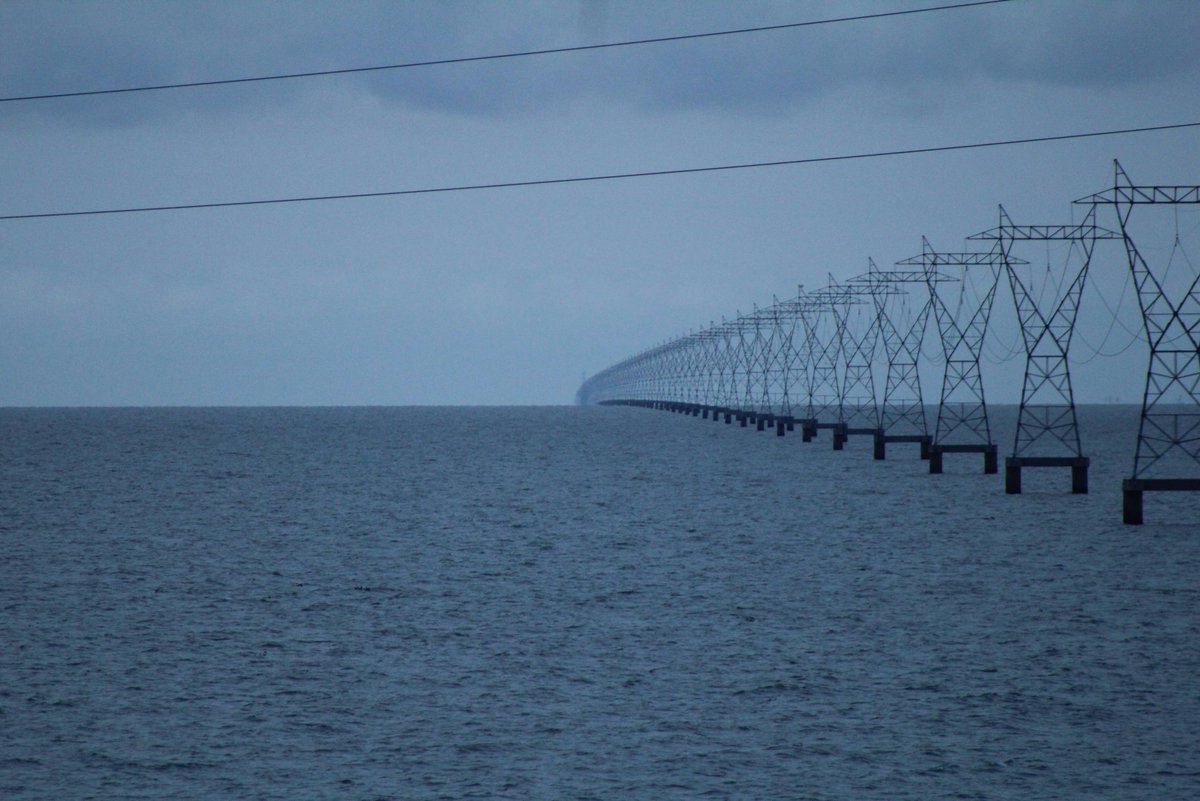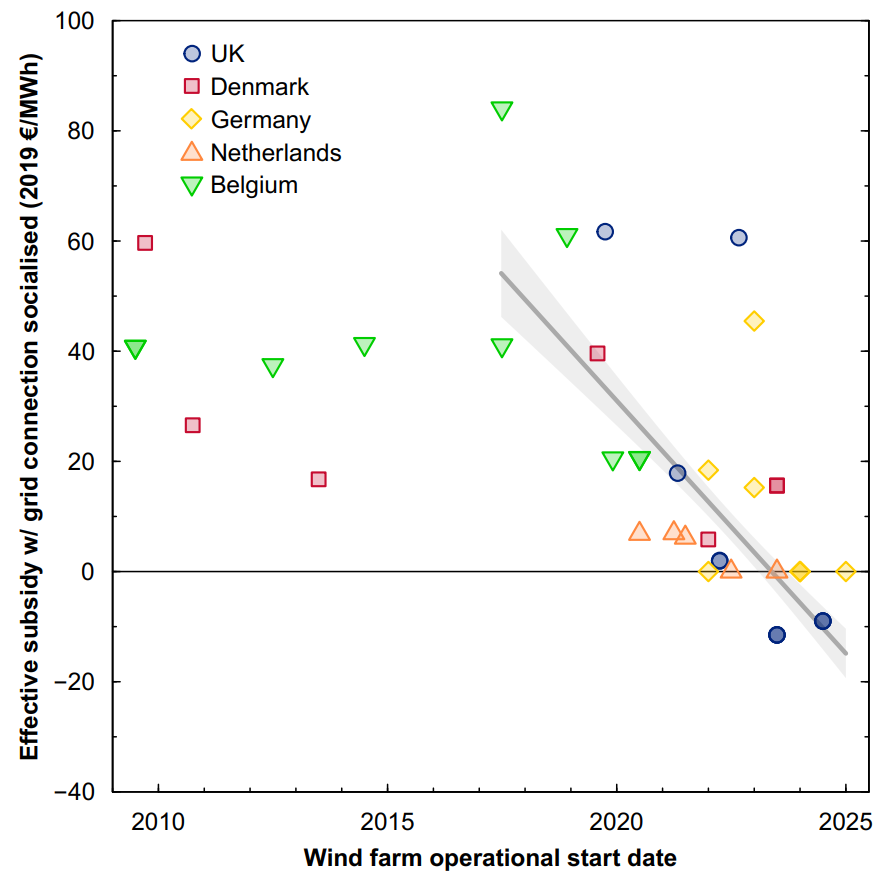Offshore wind is now so damn cheap it gets *negative* subsidies in Europe.
Hard to believe? Check out our new paper in @NatureEnergyJnl: & #39;Offshore wind competitiveness in mature markets without subsidy& #39;
https://www.nature.com/articles/s41560-020-0661-2
https://www.nature.com/articles/... class="Emoji" style="height:16px;" src=" https://abs.twimg.com/emoji/v2/... draggable="false" alt="🔽" title="Nach unten zeigendes Dreieck" aria-label="Emoji: Nach unten zeigendes Dreieck"> HIGHLIGHTS BELOW  https://abs.twimg.com/emoji/v2/... draggable="false" alt="⚡" title="Hochspannungszeichen" aria-label="Emoji: Hochspannungszeichen">
https://abs.twimg.com/emoji/v2/... draggable="false" alt="⚡" title="Hochspannungszeichen" aria-label="Emoji: Hochspannungszeichen">
Hard to believe? Check out our new paper in @NatureEnergyJnl: & #39;Offshore wind competitiveness in mature markets without subsidy& #39;
https://www.nature.com/articles/s41560-020-0661-2
Back in September 2019, the UK auctioned 5.5 GW of offshore wind at record-low prices. @Innogy_UK, @SSE & @Equinor will build for less than £40/MWh.
That& #39;s less than half the price @EDFenergy will get for their nuclear reactor at Hinkley Point C https://abs.twimg.com/emoji/v2/... draggable="false" alt="🤯" title="Explodierender Kopf" aria-label="Emoji: Explodierender Kopf">
https://abs.twimg.com/emoji/v2/... draggable="false" alt="🤯" title="Explodierender Kopf" aria-label="Emoji: Explodierender Kopf"> https://abs.twimg.com/emoji/v2/... draggable="false" alt="🤑" title="Gesicht mit Geld-Mund" aria-label="Emoji: Gesicht mit Geld-Mund"> https://www.bbc.co.uk/news/uk-49769259">https://www.bbc.co.uk/news/uk-4...
https://abs.twimg.com/emoji/v2/... draggable="false" alt="🤑" title="Gesicht mit Geld-Mund" aria-label="Emoji: Gesicht mit Geld-Mund"> https://www.bbc.co.uk/news/uk-49769259">https://www.bbc.co.uk/news/uk-4...
That& #39;s less than half the price @EDFenergy will get for their nuclear reactor at Hinkley Point C
But offshore wind was meant to be really expensive, right?
Historically, yes. But we found that prices are coming down by a staggering 12% per year when you look at all the recent auctions for capacity across Europe.
Historically, yes. But we found that prices are coming down by a staggering 12% per year when you look at all the recent auctions for capacity across Europe.
This shows how much money wind farms expect to receive over their lifetime. You can think of it as levelised *revenue*, rather than the usual levelised cost of electricity.
Farms built from 2022 will run for under €50/MWh (summing their revenue from power markets + subsidy)
Farms built from 2022 will run for under €50/MWh (summing their revenue from power markets + subsidy)
What does this mean for the amount of subsidy that offshore wind farms will receive? Well, that depends on who should pay for the long transmission cables that connect them to the grid…
Maybe you think society should pay, because transmission is part of the electricity network (which the state pays for).
Then Germany and Netherlands have zero-subsidy farms (auctioned back in 2017) and the UK’s recent ones are paying €10/MWh back to consumers.
Then Germany and Netherlands have zero-subsidy farms (auctioned back in 2017) and the UK’s recent ones are paying €10/MWh back to consumers.
Maybe you think developers ought to pay for their grid links, because they are part and parcel of the wind farm (and farms should pay for the costs created).
Even then, the latest UK farms are very close to zero subsidy.
Even then, the latest UK farms are very close to zero subsidy.
But, the level of subsidy also depends on future power prices. If prices fall, wind farms will claim money back off the government. If prices rise, then wind farms will be even better value in the future.
Predictions are hard… especially ones about the future…
Predictions are hard… especially ones about the future…
Over the last decade, UK power prices have risen 1% faster than inflation. If that carries on, then the latest wind farms will pay back €5/MWh to the public purse (if they should pay for the grid link)… or €20 for every MWh they generate (if society should pay).
Not bad!
Not bad!
So…
 https://abs.twimg.com/emoji/v2/... draggable="false" alt="☑️" title="Kästchen mit Häkchen" aria-label="Emoji: Kästchen mit Häkchen">Offshore wind is now a cost competitive form of electricity in mature markets.
https://abs.twimg.com/emoji/v2/... draggable="false" alt="☑️" title="Kästchen mit Häkchen" aria-label="Emoji: Kästchen mit Häkchen">Offshore wind is now a cost competitive form of electricity in mature markets.
 https://abs.twimg.com/emoji/v2/... draggable="false" alt="☑️" title="Kästchen mit Häkchen" aria-label="Emoji: Kästchen mit Häkchen">Auctions have helped bring the prices down very fast.
https://abs.twimg.com/emoji/v2/... draggable="false" alt="☑️" title="Kästchen mit Häkchen" aria-label="Emoji: Kästchen mit Häkchen">Auctions have helped bring the prices down very fast.
 https://abs.twimg.com/emoji/v2/... draggable="false" alt="☑️" title="Kästchen mit Häkchen" aria-label="Emoji: Kästchen mit Häkchen">Big targets, such as 40 GW offshore wind by 2040 from @BEISgovuk are looking better than ever!
https://abs.twimg.com/emoji/v2/... draggable="false" alt="☑️" title="Kästchen mit Häkchen" aria-label="Emoji: Kästchen mit Häkchen">Big targets, such as 40 GW offshore wind by 2040 from @BEISgovuk are looking better than ever!
Finally, a shout out to the international all-star cast of authors:
@MpunktJansen
@LenaKitzing
@SQuoilin
Edwin Wiggelinkhuizen
@BernardBulder1
Iegor Riepin
Felix Müsgens
Thank you for making all this possible https://abs.twimg.com/emoji/v2/... draggable="false" alt="😊" title="Lächelndes Gesicht mit lächelnden Augen" aria-label="Emoji: Lächelndes Gesicht mit lächelnden Augen">
https://abs.twimg.com/emoji/v2/... draggable="false" alt="😊" title="Lächelndes Gesicht mit lächelnden Augen" aria-label="Emoji: Lächelndes Gesicht mit lächelnden Augen">
@MpunktJansen
@LenaKitzing
@SQuoilin
Edwin Wiggelinkhuizen
@BernardBulder1
Iegor Riepin
Felix Müsgens
Thank you for making all this possible

 Read on Twitter
Read on Twitter







